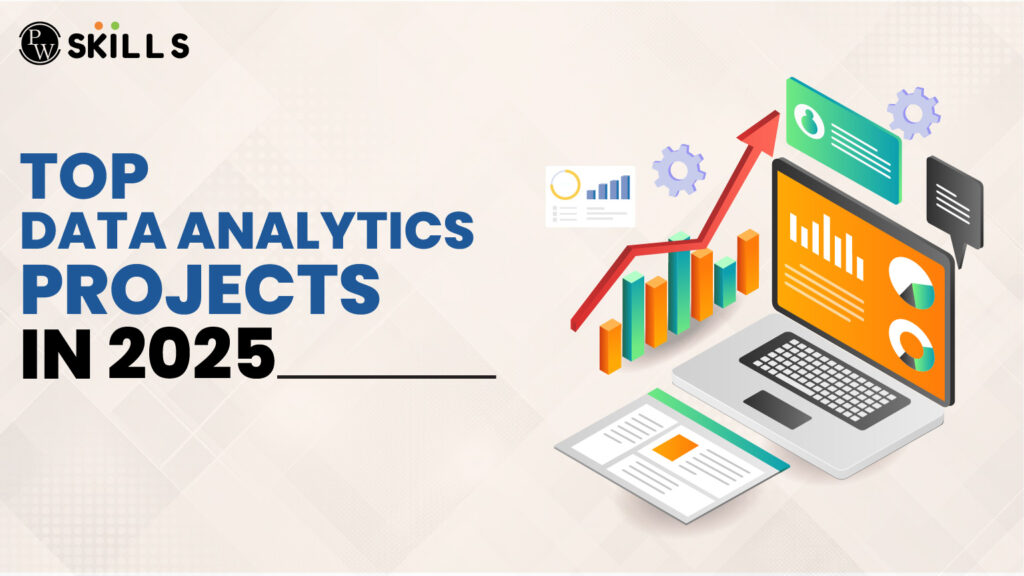Big data: With the increased usage of diverse technologies, every minute, a huge amount of data is produced. Most businesses collect and analyse big data to extract meaningful insights, uncover trends, and find correlations among unstructured data.
Big data can provide crucial insights to make strategic data driven decisions, forecast and even improvements to existing systems. Let us learn more about big data and its uses in this article.
What is Big Data?
Big Data refers to enormous and complex data sets, whose handling, or management is not possible in traditional ways. The tools for handling big data are different and a lot more advanced. The tools that can effectively manage, process, and analyse the big data sets are considered.
The data sets involve massive volumes of structured, semi-structured, and unstructured data obtained from various sources such as social media, sensors, mobile devices, the internet, transactions, and many more.
Highlights:
- Introduction to Big Data: The content begins by discussing the significance of big data in the modern technological landscape, emphasizing its role in collecting and analyzing vast amounts of data to derive meaningful insights and improve systems.
- Three Vs of Big Data: It explains the concept of big data using the three Vs – Volume, Variety, and Velocity, as defined by Gartner in 2001. These characteristics describe the immense amount, diverse types, and rapid generation of data involved in big data analytics.
- Major Examples of Big Data: The content provides concrete examples of how big data is utilized across various industries, such as online retail, healthcare, finance, and telecommunications. It illustrates how organizations leverage big data analytics to enhance customer experiences, detect fraud, optimize operations, and personalize services.
- Benefits of Using Big Data: It outlines the benefits of employing big data analytics, including improved decision-making, cost reduction, enhanced customer understanding, risk management, and gaining competitive advantages. These benefits underscore the transformative potential of big data for businesses.
- Challenges of Big Data: Lastly, the content discusses the challenges associated with handling big data, such as data security, scalability, management, and integration. It emphasizes the importance of investing in the right tools, technologies, and skills to overcome these challenges and unlock the full potential of big data.
Three Vs of Big Data
The definition of big data is certainly different at different places and for different people, but it is always described in terms of volume, variety, and velocity. The 3Vs of Big Data were defined in 2001 by Gartner. The features of big data are generally referred to as the 3Vs of big data.
The characteristics of big data in terms of 3Vs are:
- Volume: The immense amount of data that is being discussed or analyzed, which often ranges from terabytes to exabytes or even more. A massive amount of data is generated for collection and produced continuously from a variety of sources and devices.
- Velocity: Velocity is the speed at which the data is being generated, collected, and processed. In many cases, data streams rapidly and requires real-time or near real-time processing. The synchronisation of the processing and analysis of the data with the generation of the data is very important.
- Variety: There are several ways in which the data is obtained. The diversity of data types and formats, including structured data (data in databases or spreadsheets), semi-structured data (XML or JSON data), and unstructured data (images, videos, audio files, or text files).
In addition to these, some frameworks add more Vs to describe big data, including:
- Veracity: Big data has a lot of errors, and noise that make it difficult to manage. Data being messy makes it difficult to control the quality and accuracy of the data. The reliability and trustworthiness of the data and its quality, accuracy, and consistency.
- Value: It is essential to extract meaningful information from big data. The relevance of the data is the priority and value of the data, which is the ultimate goal of big data analytics.
- Variability: The data is variable. The continuous change in the meaning of the data leads to inconsistency over time.
Major Examples of Big Data
Big data is widespread across various industries and applications. Data is the most valuable asset of the company. With the right analysis of the data and its insights, organizations can gain competitive benefits and improve according to the customer experience.
Some of the examples of big data utilization are mentioned below:
- Online retailers like Amazon, Alibaba, and Walmart use big data analytics to analyze customer behavior, predict buying patterns, and personalized recommendations. They use big data to analyze vast amounts of data on customer demographics, browsing history, purchase transactions, and many more to optimize marketing campaigns, pricing strategies, and inventory management.
- Healthcare organisations use big data analytics to improve patient outcomes, optimize healthcare deliveries, and advance medical research. They analyze electronic health records (EHRs), and medical imaging data to identify disease trends, predict patient risks, and personalize treatment plans.
- Banks, Insurance Companies, and financial institutions utilize big data analytics to detect fraud, manage risks, and enhance customer experience. They analyze transaction data, customer profiles, market trends, and social media sentiment to identify fraudulent activities and offer personalized financial products and services.
- Telecommunication companies leverage big data analytics to improve network performance, enhance customer experience, and personalize services. They analyze call detail records (CDRs), network traffic data, and customer usage patterns to optimize the network capacity, and offer targeted marketing promotions.
Benefits of using Big Data
Data availability and Data accessibility have led to the popularity of big data in today’s world. Big data has the potential to transform businesses by unlocking valuable insights, driving innovations, and enabling organizations to adapt in an increasingly data-driven world.
The benefits of big data are mentioned below:
- Improved Decision Making: Big Data analytics enables organizations to gain deeper insights into their operations, customers, and the trends of the market. By processing and observing a large volume of data in real time, decision-makers can make more informed and data-driven decisions, leading to better business outcomes.
- Cost Reduction: Big data technologies, such as distributed computing frameworks, and cloud computing, enable organizations to store and process large amounts of data more efficiently and cost-effectively than traditional methods.
- Enhanced Customer Understanding: Big data analytics allows organizations to analyze customer behavior, preferences, and sentiments across multiple channels. This helps to gain total information about the customer and their needs, leading to higher customer understanding and loyalty.
- Risk Management: Big data analytics enables organizations to identify and mitigate risks more effectively by analyzing large datasets for patterns, anomalies, and potential threats.
- Competitive advantages: Organizations that effectively manage and analyze big data gain competitive leverage by making faster, more accurate decisions, anticipating market trends, and delivering superior customer experiences.
Challenges of Big Data
Handling such big data comes with a lot of challenges. The processing of such an enormous amount of data and implementing the insights have a considerable number of hurdles, which include security, integration, validation, and many more.
Organizations must invest in the right tools, technologies, and skills while prioritizing data security, governance, and compliance to unlock the full potential of big data.
Some of the major challenges are mentioned below:
- Data Security: With the proliferation of data breaches and privacy concerns, protecting sensitive information from unauthorized access, theft, and misuse is a big challenge. Businesses need to find a way to protect confidential data, such as transaction logs.
- Data Scalability: We are in the technical world in which the data is growing exponentially. The infrastructure and technology of the organization must be able to handle the increasing data load efficiently.
- Data Management: Managing large volumes of data from diverse sources can be complex and resource-intensive. Organizations need robust data management strategies to handle data storage, integration, quality, and governance effectively.
- Data Integration: Integration of the data from disparate sources and formats can be challenging, mainly dealing with legal systems, siloed data repositories, and heterogeneous data environments.
Learn Data Analytics with PW Skills
If you want to start your career in data analytics, then join our Data Analytics Course. This course is a complete package to help you prepare for different data analytics jobs at top companies. Our collaboration with more than 400+ companies will help you get exposure and interview opportunities. Also, get industry recognized certification after completing the course.
Big Data FAQs
What exactly is big data?
Big data refers to large amounts of data sets that cannot be effectively managed, processed, or analyzed using traditional data processing tools and methods. The detailed information about the big data is mentioned in the above article.
What are the benefits of big data?
Big data helps to analyze the customer’s needs and preferences, which eventually helps the organization understand the customer’s experience and improve accordingly. The detailed benefits of big data are mentioned above in the article.
What are the characteristics of big data?
There are Vs of big data that are generally referred to as the characteristics of big data. The Vs of big data include Variety, Velocity, and Volume. A detailed analysis of the Vs of big data is mentioned in the above article.







